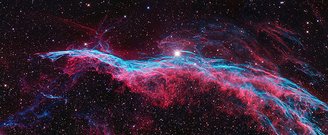In the never-ending search for extraterrestrial civilizations, two recent studies focused on investigating hypothetical megastructures that only highly advanced cultures could build: so-called Dyson spheres. Designed by physicist Freeman Dyson in 1960, these orbiters could capture and use the energy of stars.
Interestingly, two studies published on the arXiv preprint server and in the Monthly Notices of the Royal Astronomical Society, managed to detect 60 possible “alien megastructures” orbiting stars in our own galaxy.
The search for these objects, so far limited to science fiction movies, has used the light emitted by stars, essentially varying brightness occurrences caused by the presumed passage of a Dyson sphere in front of the star. Moreover, when capturing stellar energy, the spheres will produce large amounts of residual heat; this can be detected as excess infrared light in spectrometers.
Alien megastructures searched in five million stars
The first paper highlights a problem also present in other work: “The infrared extremes of stars may indicate a variety of intriguing phenomena, from protoplanetary disks to debris disks, or (more speculatively) technological signatures along the lines of Dyson spheres.”
This means that The expectation of infrared (IR) extremes is greatest in young stars but decreases with age. However, studies have revealed extreme IR in older stars ranging in age from 10 to 200 million years. The total of those found was 16, and one of them was more than 1 billion years old.
Then using machine learning to search for data from approximately 4.9 million stars and discovering higher-than-expected infrared emissions, the team found 53 potential candidates. There are also young stars among them but there are also those that are much older and therefore more likely to harbor potential alien megastructures.
Candidate stars to host Dyson spheres
The second study looked for evidence of partial Dyson spheres, megastructures that do not completely surround the star. To do this, the authors digitized data from the Gaia mission, which recorded measurements of stars’ positions and distances. These data were combined with two IR surveys: the Wide Field Infrared Survey Explorer (WISE) and the Two Micron All Sky Survey (2MASS).
Using data from these measurements, which detect thermal emissions from objects (such as circumstellar structures), the authors filtered a catalog of almost 320,000 stars and were able to detect: “Seven sources exhibiting extreme mid-infrared flow of unknown origin”says the research.
The common feature among these candidates is that they all appear to be M-dwarf stars with mass less than the Sun, but are in the main stable period of their lives, making them the coldest stars in the main sequence. surface temperatures are at most 3,400 degrees Celsius. In other words, the emitted IR is much higher than expected for ordinary debris disks composed of rocks and ice.
Future perspectives in the study of Dyson spheres

To test the findings of their study, these scientists will now need to “go through a fine-tooth screening” of potential candidates, possibly using the James Webb Space Telescope. The expectation is that Using state-of-the-art resources, the vehicle can distinguish natural cosmic signals from potential traces of extraterrestrial civilizations.
While the candidates appear consistent with Dyson’s description of spheres, it is extremely early to say with certainty that these megastructures are the cause or even exist, the authors of the second study warn in a publication. Although many strange objects have been found that defy our understanding, no aliens have appeared so far.
“This could be something that happens very rarely, like two planets colliding and producing large amounts of material,” emphasized David Hogg, co-author of one of the studies.
Is there anything you want to ask? Tell us on our social networks and get the opportunity to share the article with your friends!
Source: Tec Mundo
I’m Blaine Morgan, an experienced journalist and writer with over 8 years of experience in the tech industry. My expertise lies in writing about technology news and trends, covering everything from cutting-edge gadgets to emerging software developments. I’ve written for several leading publications including Gadget Onus where I am an author.













